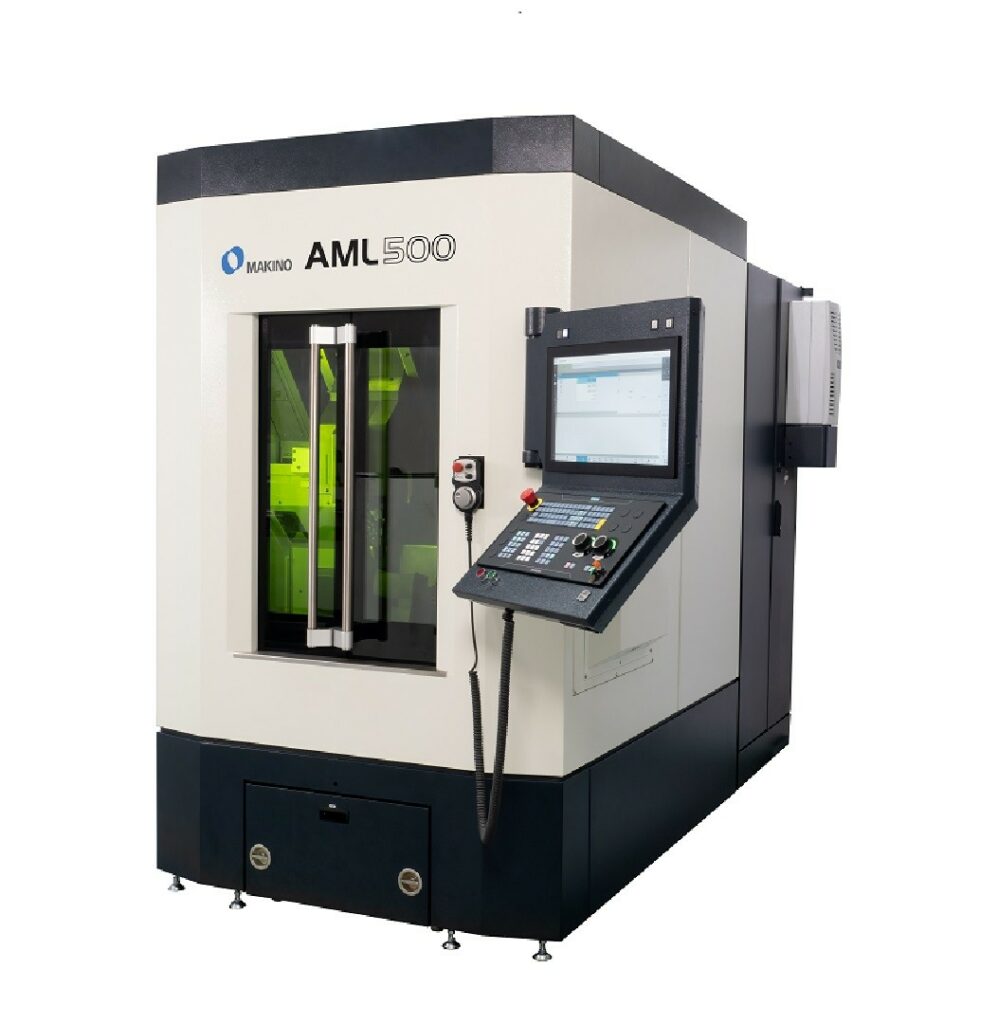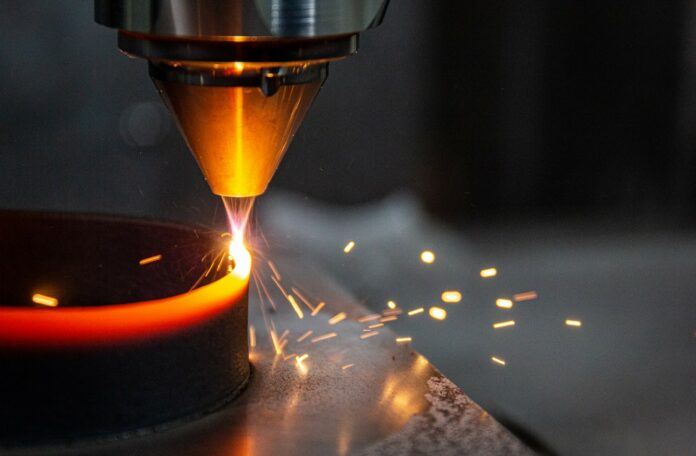The Fraunhofer Institute for Laser Technology ILT and Makino, a globally recognized manufacturer of machine tools collaborate together to develop a process that can efficiently produce, coat or repair complex geometries with high-strength materials.
With the goal of transferring the extreme high-speed laser cladding EHLA to a five-axis CNC platform, it was crucial to develop kinematics that would enable fast and dynamic movement of the machining head for the EHLA process.
This would allow a wide range of geometrical shapes to be flexibly processed and components could be coated with an enormous range of materials. Initially, the project partners only thought about Additive Manufacturing, but the topic of repairs soon came up: “Repairs are extremely exciting,” explains Min-Uh Ko, Group Leader for Additive Manufacturing and Repair LMD at Fraunhofer ILT. “Many expensive components have to be replaced, even for minor defects. A flexible system like the one from Makino with a rotary and tilting table actually offers good repair options, which saves costs for new production, avoids transport and delivery times and minimizes downtimes. Furthermore, the topic of repair is the basic prerequisite for a future circular economy.”
Makino’s task in the project was not only limited to the CNC hardware, but also to the process control, as this had to be completely redesigned. The challenge was to technically adapt the machine to high accelerations and to optimize the process control and machine kinematics in order to precisely control the interaction between the laser beam and the material.
The machine tool developed by the Makino subsidiary in Singapore achieves an effective feed speed of up to 30 meters per minute, which is a significant increase compared to conventional systems. This speed is especially advantageous when machining large and complex components, as it significantly reduces production time. The technical improvements lead to a consistently high quality of the end products and improved efficiency of the production process, which is particularly important for high-quality components in the aerospace and toolmaking industries.
Fraunhofer ILT contributed its extensive expertise in the field of laser-based manufacturing processes and brought its comprehensive infrastructure and specialized laboratory facilities to the project. Thanks to its decades of experience in process and component development for LMD, the institute made a decisive contribution to optimizing the process parameters for processing various materials and ultimately transferring the new technology to the industrial pilot customer toolcraft AG. This included adjusting the laser parameters, fine-tuning the powder feed and optimizing the motion control of the CNC machine.
“Optimizing the heat input is a critical aspect of the EHLA3D process,” explains renowned materials expert Min-Uh Ko. “The feed rate and powder gas jet play a crucial role in controlling the heat that is introduced into the material. By adjusting the feed rate and powder mass flows, we can precisely control the heat input, reduce the heat-affected zone and ensure uniform coating quality.”

Makino has implemented the joint project results in the new AML 500 processing machine.
According to Johannes Finger, the high build-up rate is a significant advance. “By using high feed rates and an optimized powder feed, we can achieve a considerably improved efficiency of the material application at the same or even higher precision. The build-up rate with HS-LMD can thus be significantly increased, which enhances the overall efficiency of the production process.“
A key aspect of future developments will be to identify and validate new areas of application for the EHLA3D process. Since the material systems that can be processed have become so flexible, this extended EHLA process can now be transferred to applications that could not normally be investigated since the LMD process has such limitations. This applies in particular to applications with multi-material systems and the printing of fine structures.
Remember, you can post job opportunities in the AM Industry on 3D ADEPT Media free of charge or look for a job via our job board. Make sure to follow us on our social networks and subscribe to our weekly newsletter : Facebook, Twitter, LinkedIn & Instagram! If you want to be featured in the next issue of our digital magazine or if you hear a story that needs to be heard, make sure to send it to contact@3dadept.com






